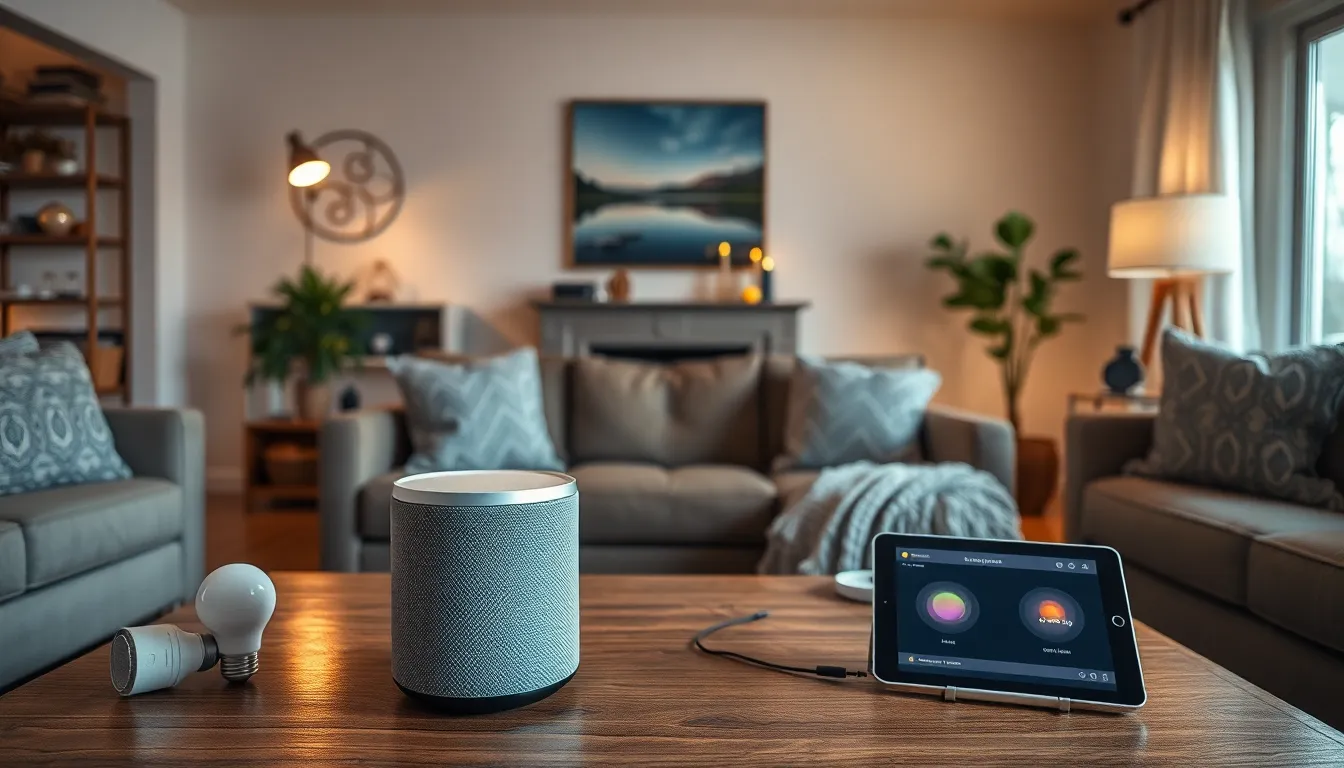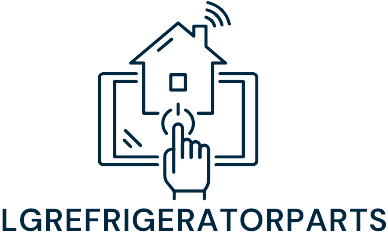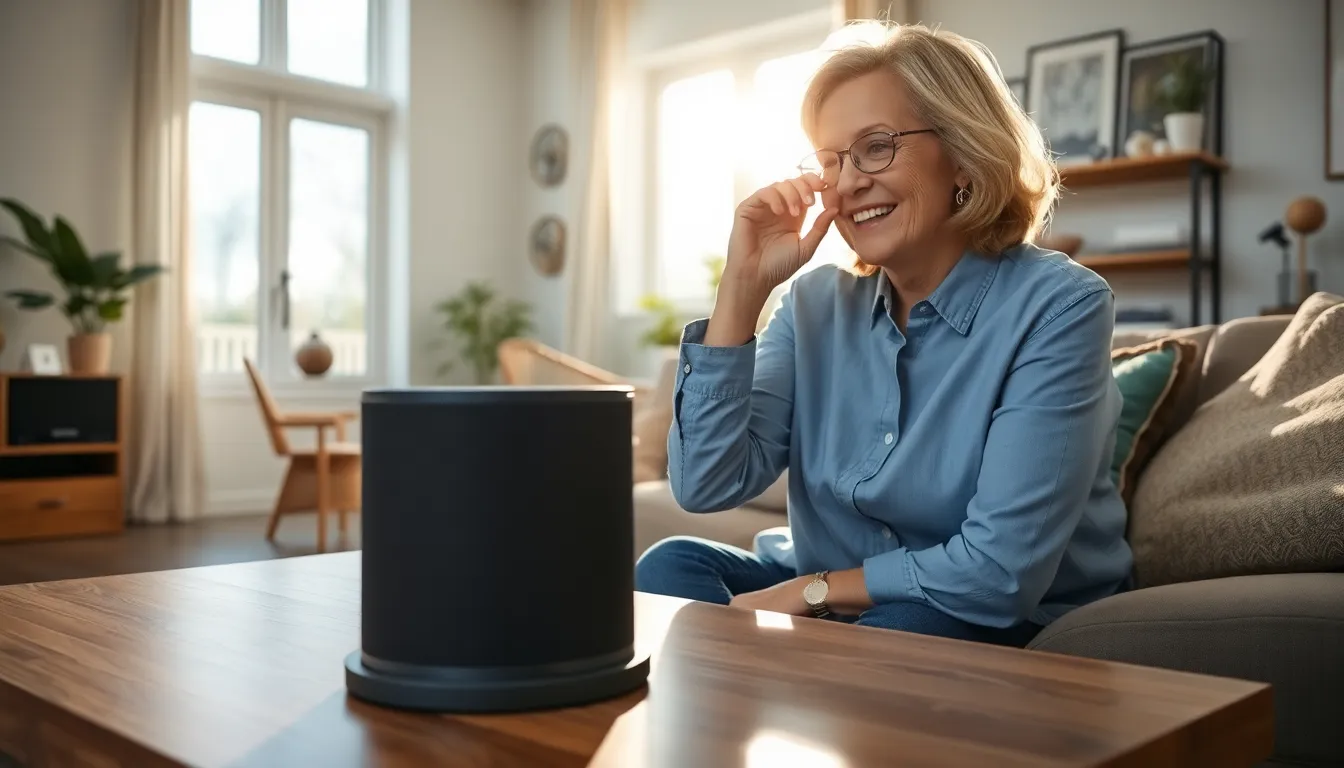Table of Contents
ToggleIn a world where talking to your gadgets isn’t just for sci-fi movies anymore, voice-controlled devices have swooped in like superheroes to save the day. Imagine asking your coffee maker for a hot brew while still in your pajamas, or commanding your lights to dim with the power of your voice. It’s not magic; it’s just technology making life a whole lot easier—and a bit more fun.
These devices are here to revolutionize how people interact with their homes, making everyday tasks feel like a scene from a futuristic film. With voice-controlled assistants ready to respond to commands, multitasking has never been so effortless. So sit back, relax, and let’s dive into the world where your voice is the ultimate remote control. Who knew that being lazy could feel so high-tech?
Overview of Voice-Controlled Devices
Voice-controlled devices utilize advanced technology to interpret and respond to spoken commands. These gadgets include smart speakers, virtual assistants, and home automation systems. Devices such as Amazon Echo and Google Nest facilitate seamless interactions that simplify tasks.
Performing actions like playing music or checking the weather becomes effortless. Users can control multiple devices from different manufacturers with a single command. Voice recognition technology continuously evolves, improving accuracy and responsiveness.
Smart home appliances provide additional convenience. Lights, thermostats, and security systems integrate with voice control, allowing users to manage their environment hands-free. Routine tasks, such as setting alarms or creating shopping lists, occur almost instantaneously.
Privacy is a concern with voice-controlled devices. Manufacturers implement measures to secure user data and enhance trust. Systems often allow users to delete previously recorded commands, promoting transparency.
The market for voice-controlled devices is expanding rapidly. According to recent statistics, over 75% of households in the United States have a voice-activated device. This growth signifies a shift toward more interactive and intuitive technology.
Voice-activated interfaces encourage accessibility features that assist those with different abilities. Commands enable users to engage with their environment in ways that traditional controls might limit. Enhancements in natural language processing continue to broaden the capabilities of these devices.
Voice-controlled technology alters the way people interact with their homes and digital services. Communication with devices becomes more intuitive, making daily life feel increasingly streamlined. As these technologies progress, the potential for new applications and systems continues to rise.
Types of Voice-Controlled Devices

Voice-controlled devices come in various forms, enhancing convenience and user experience.
Smart Speakers
Smart speakers serve as the central hub for voice interaction within homes. These devices, like Amazon Echo and Google Home, integrate high-quality audio with voice recognition technology. They allow users to play music, answer questions, and manage tasks using simple commands. Smart speakers also connect with other devices, creating a cohesive smart home environment. Their voice-controlled features enable hands-free assistance, making daily routines more efficient.
Virtual Assistants
Virtual assistants like Siri, Alexa, and Google Assistant bring robust functionality to smartphones and smart devices. They interpret spoken commands and provide personalized responses, allowing for seamless interaction. Users appreciate features such as setting reminders, sending messages, and accessing information quickly. Virtual assistants continually improve through machine learning, offering increasingly accurate performance over time. Their adaptability makes them essential tools for enhancing productivity.
Home Automation Devices
Home automation devices enhance daily living by integrating voice control into appliances. Products like smart thermostats, lights, and security systems can be managed through voice commands. This capability simplifies tasks such as adjusting temperatures, controlling lighting, and monitoring security systems. Many manufacturers incorporate compatibility features, enabling users to control devices from various brands with a single command. Their convenience promotes an intuitive living experience and fosters a connected home atmosphere.
Benefits of Voice-Controlled Devices
Voice-controlled devices offer significant advantages in everyday life, enhancing convenience and transforming user interactions.
Convenience and Accessibility
Convenience and accessibility stand out as primary benefits. Users manage tasks hands-free, reducing physical effort. Smart speakers respond instantly to commands, allowing quick adjustments to lighting, temperature, or music without moving. For individuals with disabilities, incorporating voice technology creates a more user-friendly experience. The ability to control devices using speech eliminates many barriers, making smart technology accessible to everyone. Manufacturer innovations are continuously enhancing responsiveness, empowering more people to engage with their environments efficiently.
Enhanced Productivity
Enhanced productivity emerges as another key benefit. Voice-controlled devices streamline daily routines, enabling users to multitask effectively. Setting reminders, sending messages, or retrieving information happens with simple voice prompts. Individuals frequently juggle work and personal responsibilities, so optimizing tasks frees up time for other priorities. Virtual assistants prioritize tasks according to user preferences, making it easier to stay organized. Even daily checklists become manageable through voice input, facilitating a smoother workflow. Overall, integrating voice commands into regular activities significantly boosts efficiency and task completion rates.
Potential Drawbacks and Concerns
Voice-controlled devices offer numerous benefits but come with notable drawbacks. Understanding these concerns aids users in making informed decisions.
Privacy Issues
Privacy remains a significant concern for many users of voice-controlled devices. Data collected during voice interactions often includes personal information, which may be stored and analyzed by manufacturers. Nearly 50% of users express worry about unauthorized access to their voice recordings. Manufacturers are increasingly introducing privacy measures, yet the potential for misuse persists. Users may find it challenging to fully trust that their data remains secure, as privacy policies can vary among companies. Continuous monitoring of voice data presents risks, leading to unwanted surveillance. Transparency about data handling practices plays a crucial role in addressing these privacy fears.
Dependence on Technology
Dependence on voice-controlled devices can lead to various issues. Users may find themselves relying heavily on technology for everyday tasks, potentially diminishing their problem-solving skills. Instant responses to simple inquiries or commands can create a false sense of reliance on these devices. Research indicates that over 70% of households utilize voice commands, increasing the likelihood of dependency. Disruption of technology can result in frustration, as tasks become unmanageable without these devices. Additionally, over-reliance might hinder interpersonal communication, as users may prefer voice commands over face-to-face interactions. Balancing technology use with personal capabilities ensures a healthier relationship with voice-controlled devices.
Future Trends in Voice-Controlled Devices
Emerging trends in voice-controlled devices signal significant advancements in technology. Natural language processing improvements enhance voice recognition accuracy, allowing devices to understand complex commands. As multi-language support expands, users worldwide become more integrated into this tech landscape, ensuring broader accessibility.
Integration of artificial intelligence promises personalization in user experiences. Voice-controlled assistants will soon learn individual preferences, providing tailored responses and recommendations. This adaptability not only improves functionality but also fosters a more natural interaction with technology.
Growing interest in smart home ecosystems indicates a shift towards interconnected devices. Manufacturers focus on seamless communication between different brands, enhancing user convenience. Users will find themselves controlling various appliances with simple voice commands, promoting an efficient home environment.
Increased focus on privacy protections marks another important trend. Companies are implementing robust security measures to safeguard user data, addressing growing privacy concerns. As transparency becomes a priority, users develop more trust in these technologies.
Additionally, advancements in hardware and speaker quality enhance audio experiences. Voice-controlled devices will offer richer sound reproduction, enriching media consumption and enhancing user engagement. This evolution makes interaction feel more immersive.
Remote capabilities are expected to grow, allowing users to control devices from greater distances. With improved connectivity, managing daily routines from anywhere becomes a reality. This expanded flexibility aligns with the fast pace of modern life.
Investment in voice technology integration fosters collaboration across industries. Partners across healthcare, automotive, and education sectors adopt voice-controlled solutions to improve functionality and user experience. Thus, voice-controlled devices become indispensable in various applications, underscoring their transformative potential.
Voice-controlled devices are reshaping how people interact with their homes and daily tasks. As technology continues to evolve these tools become more intuitive and accessible. Users can enjoy the convenience of managing their environments hands-free while enhancing their productivity.
Despite concerns around privacy and dependency there’s no denying the significant benefits these devices bring to modern living. With advancements in natural language processing and artificial intelligence the future of voice-controlled technology looks promising.
As smart home ecosystems grow and manufacturers prioritize user security the integration of voice commands into everyday life will only become more seamless. Embracing this technology opens up a world of possibilities making life easier and more connected.



